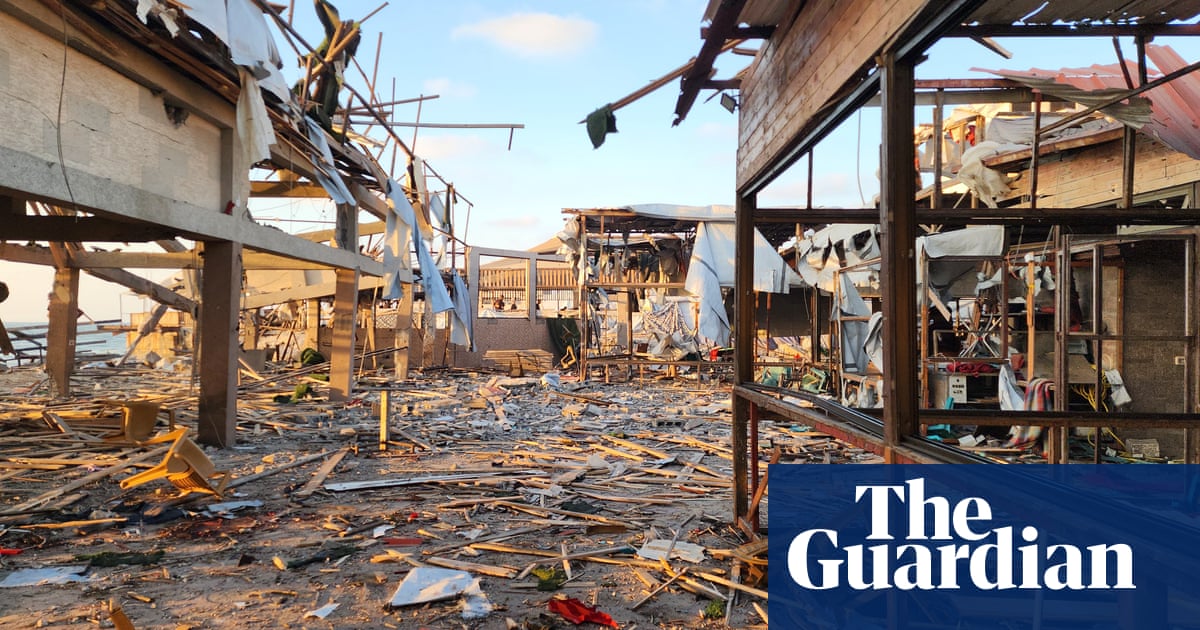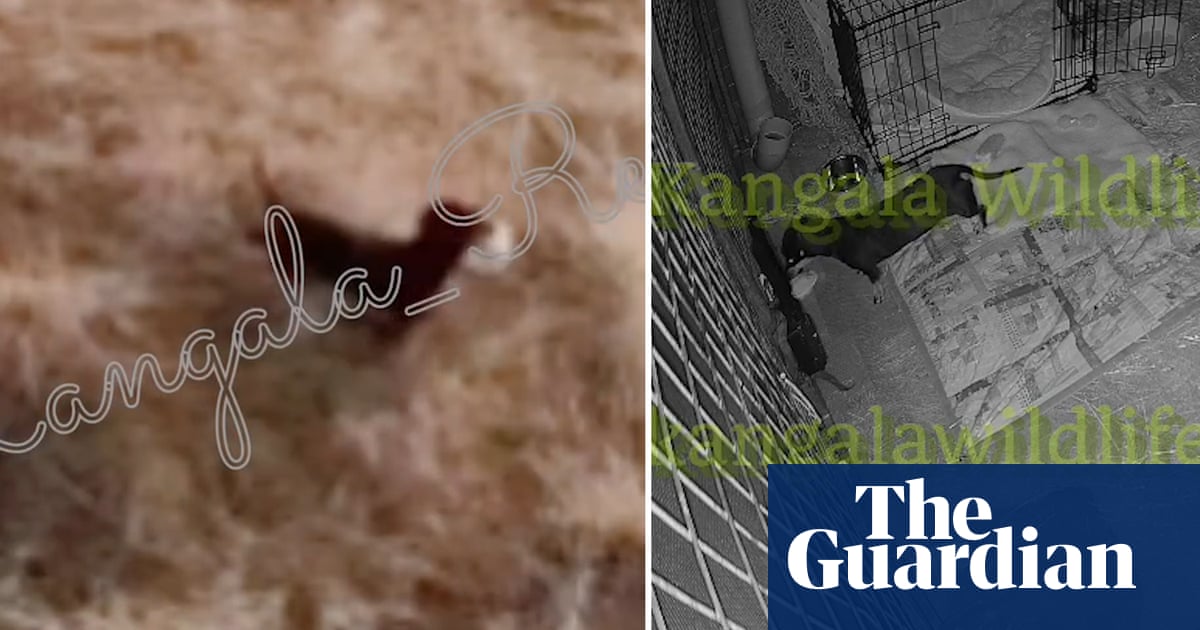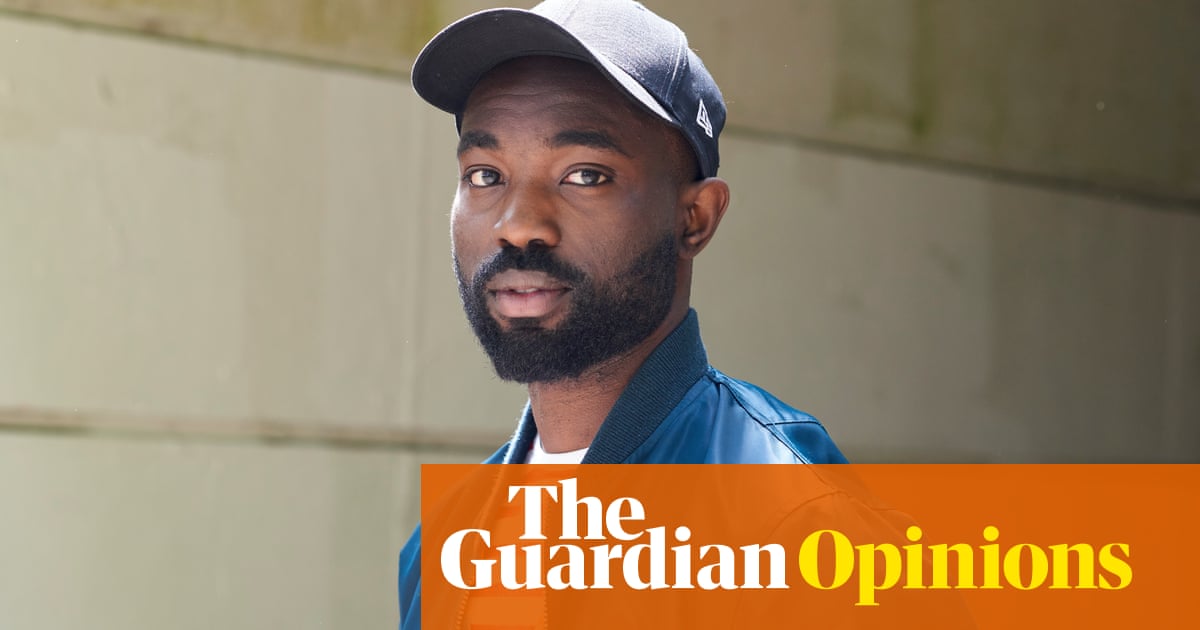If you find it difficult to think of a river as alive, try picturing a dying or dead river. This is easier. We know what this looks like. We know how it feels. A dying river is one who does not reach the sea. A dying river’s fish float belly-up in stagnant pools. Swans on the upper Thames near Windsor now wear brown tidemarks on their snowy chest feathers, showing where they have sailed through sewage. I recently saw a Southern Water riverbank sign badged with a bright blue logo that read “Water for Life”. The sign instructed passersby to “avoid contact with the water. If you’ve had contact with the water, please wash your hands before eating.” In parts of this septic isle, fresh water has become first undrinkable, then unswimmable, then untouchable.
How did it come to this – and where do we go from here? The crisis is one of imagination as well as of legislation. We have forgotten that our fate flows with that of rivers, and always has. Our relationship with fresh water has become intensely instrumentalised, privatised and monetised: river understood as resource, not life force. The duty of care for rivers, who extend such care to us, has been abrogated. Regulation has gone unenforced, monitoring is strategically underfunded. Rivers named after deities – the Shannon (Sinnan), the Dee (Deva) – now struggle under burdens of nitrates, forever chemicals and waste.
One of modernity’s many vanishing tricks is to disappear the provisionality of its own conclusions. We now take it for granted that we take rivers for granted. It is unremarkable that a company registered yesterday is, in the eyes of the law, an entity with legal standing and a suite of rights, including the right to sue – but that a river who has flowed for 10,000 years has no rights at all.
Water stocks are traded on futures markets, with disaster-capitalist investors gambling that crises to come will drive unit prices up. Fresh water is fiscalised as a liquid asset or, as Goldman Sachs hungrily describes it, “the new oil”. Rivers have been reduced to “one-dimensional water”, to adapt Marcuse: de-territorialised and organised in order to maximise yield. Flowing fresh water has been systematically stripped of its spirits, and reduced to what Isaac Newton called “inanimate brute matter”. Thus designated as feedstock for the machine, rivers have been laid open for the slow violence that has been inflicted on them.
The vast Anthropocene reshaping of the planet that is now under way extends to water as well as land. The Three Gorges dam project on the Yangtze River in China impounds so much water that it has measurably slowed the rotation speed of the Earth. Oil extraction from the Alberta tar sands uses more than 200bn litres of fresh water a year: this is abstracted from the Athabasca River, rendered toxic – and then injected back into aquifers by way of “disposal”. Europe has the most obstructed river system of any continent, with more than 1m barriers fragmenting flow and only a handful of free-running waterways remaining.
It has long been in the interests of power to deem nature dead, in preparation for its extraction, conversion and consumption. This systematic de-animation process has been accelerated to calamity speed by the new US administration. Trump’s inaugural address was obsessively focused on “land”; his speech a bingo card of 19th-century settler-Christian tropes glorifying first the subjugation then exploitation of the continent’s “resources”, natural and human: manifest destiny, the “untamed wilderness”, the “frontier hypothesis”. At his Senate confirmation hearing, Doug Burgum – the new interior secretary – described public lands and waters as “America’s balance sheet”, which he would “unleash” for “economic activity”. Everything must be assetised. Listening to Burgum, I thought of Leslie Marmon Silko in her visionary Ceremony (1977): ‘They see no life / When they look they see only objects / The world is a dead thing for them / The trees and rivers are not alive …’
As the living world has been further deadened into “brute matter”, so language that recognises its liveliness – a “grammar of animacy”, in Robin Wall Kimmerer’s celebrated phrase – has in turn become rarer. Words make worlds. In English, we “it” rivers, trees, mountains and creatures: a mode of address that reduces them to the status of stuff, and distinguishes them from human people. In English, pronouns for natural features are “which” or “that”: the river that flows; the forest that grows. I prefer to speak of rivers who flow and forests who grow. In English, we refer to a river in the singular, but “river” is one of the great group nouns, containing multitudes. In English, there is no verb “to river”. But what could be more of a verb than a river?
In the spring of 2020, I made the first notes for a book about ideas of life. Under the heading “Anima”, I jotted a triplet of quick, provocative questions to myself: Can a forest think? Does a mountain remember? Is a river alive? All have proved good questions with which to spend time, but it was the last of the three that would not let me go.
In the end, I spent four years in pursuit of answers to this enigmatic question. That pursuit took me to places in the world where rivers are being imagined in radically different ways; it brought me into contact with scores of brave and visionary people – among them lawyers, judges, ecologists, activists, community leaders and artists – who are working to redefine the ways rivers are perceived and treated; who are working, indeed, to redefine life itself.

In urban planning, “daylighting” is the practice of bringing rivers back to the surface of towns and cities: unburying them from the dark tunnels in which they have been confined. These entombed watercourses are sometimes known as “ghost rivers”; their voices heard at street level only as prisoners’ whispers drifting from drain grilles. London has more than 20 such ghosts. You could walk the capital’s streets for years and not know that each day you are crossing rivers other than the Thames: the Fleet, the Moselle, the Walbrook, the Tyburn and the Westbourne to the north of the Thames; and south of it the Quaggy, the Neckinger, the Falconbrook and others, their names now largely lost to concrete and culvert.
“Daylighting” is a means of resurrecting river ghosts – of re-encountering rivers as fellow citizens. In cities where daylighting has occurred – Seattle, Yonkers, Singapore, San Antonio, many more – the results have often been transformative. In Seoul, the Cheonggyecheon Stream was freed from the highway that encased it: the public park created along its banks now draws 90,000 pedestrians on an average day. Summer temperatures at the waterside can be five degrees cooler than surrounding areas, and air pollution levels have dropped by more than a third. Earlier this year, a long-buried section of Sheffield’s River Sheaf was disinterred in the city centre to widespread celebration; the result of a long campaign to make the river visible, restored and accessible.
Buried feelings, as well as buried rivers, can be daylighted. We need now, urgently, to resurface older, kinder ways of relating to rivers – and to see what transformations occur if rivers were recognised as both alive and killable. What might flow from such a recognition in terms of imagination, law and politics?
Seeking answers to such questions, I made three long river journeys to regions where rivers have become a focus for revolutionary thinking about what the philosopher Michel Serres called “the natural contract”. In each of these places, rivers are understood in some fundamental way to be “alive” – and in each place, too, the survival of rivers is under extreme threat: from mining, pollution and damming.
The first journey was to an Ecuadorian cloud forest named Los Cedros, home to the headwaters of the Rio Los Cedros, the “River of the Cedars”. In November 2021, as mining companies were preparing to destroy Los Cedros in search of its gold, the cloud forest was saved by an astonishing court judgment that invoked the “rights of nature” articles embedded in the Ecuadorian constitution, and proclaimed the “right to life” of the forest and its rivers.
The second was to the sorely wounded creeks, lagoons and estuaries of the watery city of Chennai in south-east India. There, rivers barely endure for most of the year – then return monstrously in cyclone season to flood the city, bringing crocodiles and catfish into the inundated streets. There, too, an indefatigable group of young people is trying to resurrect a just water culture, in a region where humans and their ancestors have lived and thrived by rivers for at least 1m years but where a severe water amnesia has now taken hold.
The third journey was to the interior of Nitassinan (also known as Quebec), homeland of the Innu people, where the wild Mutehekau Shipu flows for more than 100 miles through roadless boreal forest to make seafall at the Gulf of Saint Lawrence. In 2021, that extraordinary river became the first in Canada to have its rights declared, as part of a campaign to save it from death by drowning at the hands of a planned multi-dam hydro development.
In the course of those journeys I met stolen, drowned and vanished rivers, and I saw the ruthlessly executed power of companies, criminals and governments. I also watched three people being brought back from within the shadow of death by rivers. I witnessed two mycological discoveries, one of which shifted slightly the whole story of life on Earth. By the time I finished writing, it was irrefutable to me that the rivers themselves had been my vital collaborators and co-authors.
The question of what is alive is both an ancient and an urgent one. It is at the heart of the oldest written long-narrative poem we know, the Epic of Gilgamesh, more than 4,000 years old in its earliest form. The Epic is materially a river text: it was recorded on tablets made from river clay, in a cuneiform script pressed into the clay using the trimmed end of a river reed, and it was first composed and circulated in Mesopotamia, the region whose name means “the land between rivers”.
after newsletter promotion
In that poem’s central episode, Gilgamesh travels to the sacred Cedar Forest, which grows on the banks of the Euphrates. There he confronts a “demon” called Humbaba, who is in fact the embodiment of the forest’s anima. Gilgamesh slaughters Humbaba and then – in the world’s first recorded act of ecocide – draws his axe and clear-fells the Cedar Forest. Catastrophe follows, of course. The poem sounds a warning that we are still failing to heed, more than four millennia later. The law too is a storied thing – and as such it can be re-storied. On 20 March 2017 an extraordinary piece of legislation called the Te Awa Tupua (Whanganui River Claims Settlement) Act was passed in Aotearoa New Zealand’s parliament house, accompanied by tears and songs from many of those present. The act concerned the Whanganui River, who rises as meltwater on the slopes of three North Island volcanoes and flows for 180 miles to its mouth at the Tasman Sea.
At the act’s heart is a radical claim: that the Whanganui River is alive. The act speaks unambiguously of the river as an “indivisible and living whole”; a “spiritual and physical entity” with a “lifeforce”. “We want … to begin with the view that [the river] is a living being, and then consider its future from that central belief,” said Gerrard Albert, lead negotiator for the Whanganui iwi (tribe) during the act’s drafting. To its declaration of the river as alive, the act added a second dramatic innovation: it also recognised the river as a rights-bearing “legal person”, with the capacity to represent itself in court.
The passing of the Te Awa Tupua Act rang like a gong-strike around the world and supercharged the dynamic, disruptive current of ideas usually known as the Rights of Nature movement. Over the past 20 years, Rights of Nature thinking has lit up activists, artists, lawmakers and politicians across six continents, and inspired powerful new forms of future dreaming.

Rivers have become a particular focus for this movement. “River rights” have become the commonest form of novel legal subjectivity in dozens of countries from Australia to Canada. A Universal Declaration of River Rights has been drawn up that recognises rivers as living entities with fundamental rights, including the right to flow and the right to be free from pollution. These ideas have now washed up on British shores. In early March, Lewes district council in East Sussex agreed to champion a charter of rights for the River Ouse, and river rights campaigns are emerging for the Clyde, the Don, the Derwent and the Rye.
Meanwhile, a wider chorus of voices is speaking up for Britain’s rivers in terms of life, death and love: animism energising activism. Feargal Sharkey has held government and industry’s feet to the fire for five years, fighting to reverse, as he puts it, “the simple truth of the matter that every river in England is dying”. Last November, 15,000 people joined a march for clean water in London, the biggest water protest in the country’s history. In the upper Usk, in Wales, the youth-led Penpont Project is restoring lost areas of riparian woodland and creating a “living memory map” of the sub-catchment. The inspirational activist-lawyer Paul Powlesland has forged a group of hardworking “guardians” for the River Roding in Essex, motivated by “the belief that the Roding is sacred, it is a being and it does have rights”. Each January now, a Blessing of the River Thames ceremony is held on London Bridge by the parishes of Southwark and St Magnus the Martyr. On the English-Welsh border, citizen scientists are organising and training one another in order to fight the demise of River Wye: “a great river dying before our eyes”, in George Monbiot’s words. The agile, bullish young organisation River Action is taking the government to court in order to drive policy change, and has created an extensive River Rescue Kit aimed at empowering ordinary people to take action for their waterbodies: River Action’s work is founded on the belief that “every family, home and institution has its roots in rivers of this land”, and that “rescuing the rivers is upholding values of gratitude, respect, justice, love, compassion and honour”.
Rivers are easily wounded. But given a chance, they heal themselves with remarkable speed. Their life pours back.
On 2 October 2024, the century-old Iron Gate dam was removed from the upper Klamath River, who flows out of Oregon and into California. Its demolition concluded the largest de-damming project in US history, and was the outcome of two decades of campaigning and watershed activism, led by members of the Klamath Tribe.
Only a few days later, something extraordinary happened. A sonar camera set up by scientists detected a single chinook salmon migrating upstream to spawn, past the pinch-point where the Iron Gate Dam had stood. It was the first fish to make that journey in more than 100 years, guided by an ancient navigation system and driven by an undeniable urge.

As the salmon return in number to the Klamath, so with them will come the web of life they feed. Salmon are primarily ocean creatures; they carry marine nutrients far inland in their bodies when they come to spawn. In the upper watershed, scavengers will drag off the carcasses of spawned salmon, strip their flesh and guts and discard the skeletons. Fungi will reach up their white ghost-fingers, draw the fishbones down and decompose them – then share the goodness with the roots of the trees. By means of the river, the ocean will feed the forest.
I saw the sonar image of that single chinook – the harbinger of all that is to come for the Klamath – on the day it was released. The image was grainy in the way that sonar is, the fish just a blurry lozenge-line set against a blurry background. Definition didn’t matter, though; the simple fact of it caused happiness to bloom suddenly huge in my heart, and the heaviness of spirit from which I had been suffering for weeks began to lift.
I haven’t been able to find the image of the salmon again online, though I’ve searched for it several times. It has swum back out into the ocean of the internet. Perhaps I dreamed it. I do know this for sure: water, once healed, heals us in return.

 2 months ago
40
2 months ago
40

















































